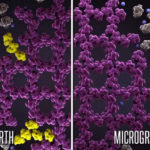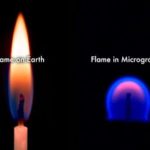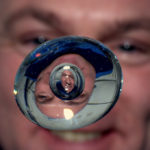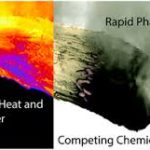This article is not for you. It’s for you to impress your grandkids, neices and nephews at their next birthday party. Microgravity Magic
However, if we’re all going to go live in Space, we might want to know why it’s so cool, right? How do we make money there? Why live there? How’s it any different than Racine, Wisconsin and will we need floor wax?
NASA puts out a number of nifty 8th grade primers for the future researchers of tomorrow. We’ve learned more about microgravity in ten minutes reading these study guides than an entire semester of Physics or Biology at MIT. Therefore, if you’re not an aspiring researcher of tomorrow, or you were actually paying attention in your STEM classes, you may skip to the next lesson in astro-physics and hire-on at SPACE-X or NANORACKS.
Right now, we’re going to boil down a few of the concepts for microgravity so that you can get to the good stuff– in about the time it takes to microwave a Turkey Pot Pie.
Microgravity is Different
Critical phenomena affected by microgravity:
• Surface wetting & interfacial tension
• Multiphase flow & heat transfer
• Multiphase system dynamics
• Solidification
• Fire phenomena & combustion
 SURFACE TENSION
SURFACE TENSION
Understanding surface tension better could lead to new materials processing techniques that either reduce surface tension’s influence or take advantage of it. One example of a positive application of surface tension is the use of sprayers to paint a surface.
Surface tension causes paint to form very small droplets that cover a surface uniformly without forming drips and runs. Another is the study of Insulin. The “ring-sheared drop” (RSD) takes advantage of the microgravity environment provided by orbiting in space to study the effect of shear stress on a drop of protein fluid without interference from the walls of a petri dish that would traditionally be used to hold the drop on Earth. And don’t forget the Slime! Nickelodeon’s iconic green slime. The science investigation, titled “Non-Newtonian Fluids in Microgravity,” will examine the physical properties of slime in microgravity through a series of fun experiments, and astronauts will record videos of the “zero-g” slime to share with the world. Astronauts will play a game of “slime pong,” in which they will use ping-pong paddles to bat a glob of slime back and forth.
CRYSTAL GROWTH

Crystals are the basis of all proteins. 100,000 proteins control the human body.
On station, in microgravity, crystals grow 300% the size and 300% the speed they do on Earth. That’s because the crystals don’t shear against each other…much like a baby’s cell develops in embryotic fluid.
What’s the effect? Well if you want to study proteins, you want to do this on station. That way your work is done 3X’s faster.
It’s also a reason to consider cloning body parts on station. Want to grow an extra ear? Using protein ladders, micro gravity might be your ticket.
100% BURN

For thousands of years, people have been mixing the oxygen-rich air of Earth with an almost endless variety of fuels to produce hot luminous flame.
Our birthday candles on Earth are two colors, tear-dropped in shape and yellow on top with smoke rising above. That’s partly due to an inefficient combination of chemicals in combustion here in mother earth’s gravity. On station, the same candle ( burning in oxygen) is round, blue and has little to no smoke. When a candle burns, the flame heats the nearby air and starts to rise. … As you can see from the NASA photos, a candle flame in the microgravity is spherical instead of its elongated shape on Earth. Without gravity, there’s no “up” direction for warm air to rise and create a convection current.
Microgravity has properties of Chemical Transformation. On ISS, in microgravity, scientists study the effects of complete burn. There may be several areas for future study:
- The ratio of buoyancy to viscous forces, known as the Grashof number, is high on the ground.
- High temperature changes lead to large density changes (not unlike eating that entire birthday cake will lead to your density increasing)
- Mixture Flammability -There are flammability limits driven by radiative losses and/or effects of chemical kinetics
- Flame Instabilities on Earth – Driven by heat and mass diffusion the hydrodynamic effects of gravity on flame are like my Uncle Mike…a little unstable
- Gas Diffusion Flames- Fuel flow and flame speed are mismatching on Earth.. Laminar flames are longer and wider, more sooty. Radiative losses increase.
- Droplet Combustion -Unsteady effects slowly increase burning rates & flame diameters • Soot shells may form. Chimney sweeps get called in and there’s a whole musical number.
- Cloud Combustion -Uniform dispersion may allow combustion of clouds that would not burn on the ground due to settling.
- Smoldering – Oxygen transport and product removal from smoldering surfaces absent in microgravity
- Flame Spread Reduced -Opposed with respect to oxidizer flow. Reduced propagation speed from radiative losses can lead to flame extinction
- Thin Fuels -Flammability may be greater because low-speed opposing flow can overcome higher oxygen limiting concentration
- Thick Fuels – No steady state spread. Increased conduction needed to raise the temperature of the heated layer. Enhanced radiative losses and decreased oxygen transport lead to flame extinction
- Liquid Fuels – Surface tension gradients draw the fuel out. Shallow pools behave similarly as on the ground
Microgravity Engineers study the burning of fuels to produce better internal combustion engines; chemists peer into flames looking for exotic reactions; chefs experiment with fire to cook better food- like cookies! An interesting combination of this phenomenon is in the study of lubrication and soot surrounding engine oil…read on….
 Pyrolysis (Not bad breath, that’s halitosis)
Pyrolysis (Not bad breath, that’s halitosis)
Pyrolysis is the chemical decomposition of organic (carbon-based) materials through the application of heat.
For example, the microgravity effects on pyrolysis would impact oxygen production from lunar rocks by way of gas diffusion and heat transport issues. Pyrolysis in micro gravity may also affect plasma generation, oxygen recovery from methane, reusing bodily fluids (ewww!) and other hazardous liquids in a microgravity environment. Another example is the making of plastics.
That’s because pyrolysis, is the first step in gasification and combustion, which occurs in the absence or near absence of oxygen, and it is thus distinct from combustion (burning), which can take place only if sufficient oxygen is present. The rate of pyrolysis increases with temperature. In industrial applications the temperatures used are often 430 °C (about 800 °F) or higher, whereas in smaller-scale operations the temperature may be much lower. Two well-known products created by pyrolysis are a form of charcoal called biochar, created by heating wood, and coke (which is used as an industrial fuel and a heat shield), created by heating coal. Pyrolysis also produces condensable liquids (or tar) and noncondensable gases.
TO STUDY: Density-driven convection cannot be used for mixing. Mechanical stirring and/or careful reaction chamber design can allow complete mixing.
Immiscible multiphase mixtures can remain suspended. Enhanced phase interaction rates possible
We’ll be updating this article over the next week…so bookmark this page and share with your family’s future researchers.
EXCELSIOR!
 SURFACE TENSION
SURFACE TENSION Pyrolysis (Not bad breath, that’s halitosis)
Pyrolysis (Not bad breath, that’s halitosis)